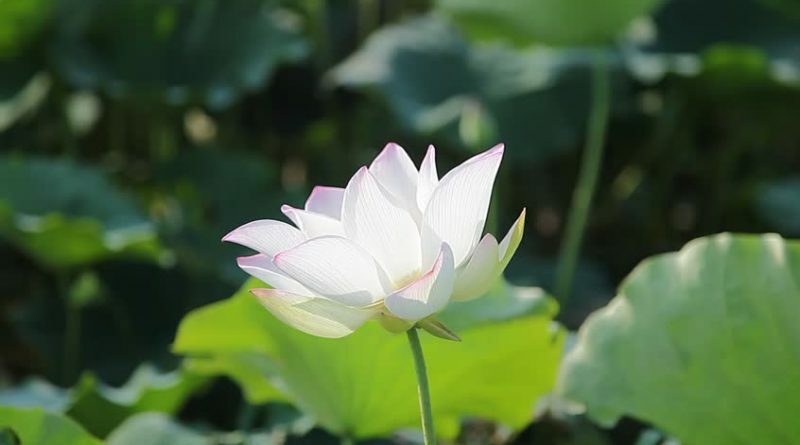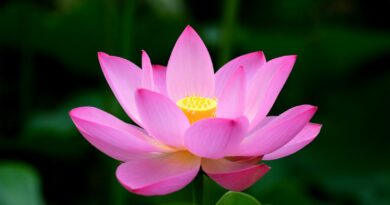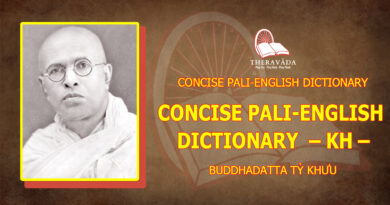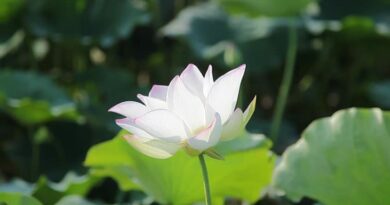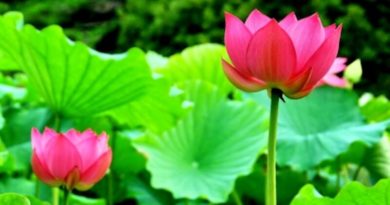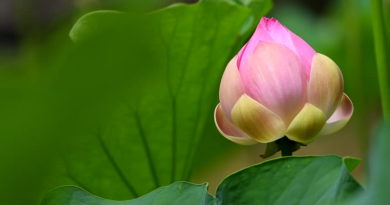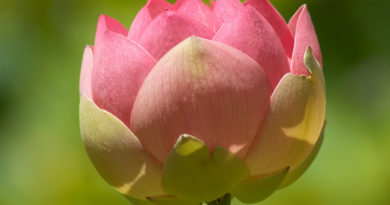THE PATTHANUDDESA DIPANI – CHAPTER 30: SYNCHRONY OF RELATIONS
THE PATTHANUDDESA DIPANI – CHAPTER 30: SYNCHRONY OF RELATIONS
The synchrony of relations in the groups of material qualities will now be stated. There are twenty-eight kinds of material qualities:
A. Four essential material qualities:
- The element of solidity (pathavi)
- The element of cohesion (apo)
- The element of kinetic energy (tejo)
- The element of motion (vayo); the tangible (photthabba):
this material quality is composed of three essentials, namely, the element of extension, the element of kinetic energy and the element of motion.
B. Five sensitive material qualities:
- The eye (cakkhu)
- The ear (sota)
- The nose (gana)
- The tongue (jivha)
- The body (kaya).
C. Five material qualities of sense-fields:
- Visible form (rupa)
- Sound (sadda)
- Odor (gandha)
- Sapid (rasa).
D. Two material qualities of sex:
- Female sex (itthibhava)
- Male sex (pumbhava).
E. One material quality of life (jivita).
F. One material quality of heart-base (hadaya-vatthu).
G. One material quality of nutrition (ahara).
H. One material quality of limitation (akasa-dhatu).
I. Two material qualities of communication:
- intimation by the body (kayavinnatti)
- intimation by speech (vacivinnatti).
J. Three material qualities of plasticity:
- Lightness (lahuta)
- Pliancy (muduta)
- Adaptability (kammannata).
K. Four material qualities of salient features:
- Integration (upacaya)
- Continuance (santati)
- Decay (jarata)
- Impermanence (aniccata).
Of these, six kinds of material qualities–viz., the four essentials, the material quality of life, and the material quality of nutrition–causally relate themselves to the material qualities. Here also the four essentials are mutually related among themselves by way of five relations: sahajata, annamanna, nissaya, atthi, and avigata; and they are related to the coexistent material qualities derived from the latter by way of four relations (i.e. excluding annamanna in the above five). The material quality of life causally relates itself to the coexistent material qualities produced by kamma by way of indriya. The material quality of nutrition causally relates itself to both the coexistent and the non-coexistent material qualities, which are corporeal by way of ahara.
Again, thirteen kinds of material qualities causally relate themselves to the mental states by some particular relations. These material qualities are: the five kinds of sensitive material qualities, the seven kinds of sense-fields, and the heart-basis. Of these, just as a mother is related to her son, so also the five kinds of sensitive material qualities are causally related to the five sense-cognitions by way of vatthu-purejata, by way of vatthu-purejatindriya, and by way of vatthupurejata-vippayutta. And just as a father is related to his son, so also the seven sense-fields are causally related to the five sense-cognitions and the three elements of apprehension by way of arammanapurejata. In the same way, just as a tree is related to the deva who inhabits it, so also the heart-basis causally relates itself to the two elements of apprehension and comprehension by way of sahajatanissaya at the time of rebirth, and by way of vatthupurejata and of vatthu-purejata-vippayutta during life.
There are twenty-three groups of material qualities. They are called groups because they are tied up with the material quality of production (jati-rupa) into groups, just as hair or hay is tied up with a string.[1] Of these, the eight kinds of material qualities, such as, the Four Essentials, color, odor, taste, and nutritive essence, make up the primary octad of all material qualities.
There are nine groups produced by kamma: the vital nonad, the basic-decad, the body-decad, the female-decad, the male-decad, the eye-decad, the ear-decad, the nose-decad, and the tongue-decad. Of these, the primary octad together with the material quality of vitality, is called the vital nonad. This primary nonad together with each of the eight material qualities, i.e. heart-basis and so forth, makes up analogously the other eight decads, i.e. base-decad, and so forth. Here the four groups: vital nonad, body-decad, and twofold sex-decad, locate themselves in a creature, pervading the whole body. Here vital-nonad is the name of the maturative fire (pacakaggi) and of the bodily fire (kayaggi). Pacakaggi, or maturative fire, is that which locates itself in the stomach and matures or digests the food that has been eaten, drunk, chewed and licked. Kayaggl, or the bodily fire, is that which locates itself by pervading the whole body, and it refines the impure bile, phlegm and blood. Through the inharmonious action of these two elements, creatures become unhealthy, and by their harmonious action they become healthy. It is this dual fire (or that vital-nonad) that gives life and good complexion to creatures.
The body-decad makes available pleasurable and painful contact. The twofold sex-decads make available all the feminine characteristics to females and all the masculine characteristics to males. The remaining five decads are termed partial decads. Of these, the heart-decad, locating itself in the cavity of the heart, makes available many various kinds of moral and immoral thoughts. The four decads, i.e. eye-decad and so forth, locating themselves respectively in the eye-ball, in the interior of the ear, in the interior of the nose, and on the surface of the tongue, make available sight, hearing, smell, and taste.
There are eight groups produced by mind: the primary octad, the sound-nonad, the nonad of body-communication, the sound-decad of speech-communication. Taking these four together with lightness, pliancy and adaptability, they make up another four: the undecad of plasticity, the sound-dodecad of plasticity, the dodecad of body-communication together with plasticity, and the sound-tre-decad of speech-communication together with plasticity. The last four are termed plastic groups, and the first four are termed primary groups.
Of these, when the elements of the body are not working harmoniously, only the four primary groups occur to a sick person, whose material qualities then become heavy, coarse and inadaptable, and consequently it becomes difficult for him to maintain the bodily postures as he would wish, to move the members of the body, and even to make a vocal reply. But when the elements of the body are working harmoniously–there being no defects of the body, such as heaviness and so on, in a healthy person–the four plastic groups come into existence. Among these four, two groups of body-communication occur by means of mind or by moving any part of the body. The other two groups of speech-communication occur also on account of mind, when wishing to speak: but when non-verbal sound is produced through laughing or crying, only the two ordinary sound-groups occur. At other times the first two groups, the primary octad and the sound nonad, occur according to circumstances.
There are four groups produced by physical change: the two primary groups (i.e. the primary octad and the sound nonad) and the two plastic groups, i.e. the undecad of plasticity and the sound dodecad of plasticity). Now this body of ours maintains itself right on throughout the whole life, through a long course of bodily postures. Hence, at every moment, there occur in this body the harmonious and inharmonious workings of the elements, through changes in the postures; through changes in its temperature, through changes of food, air, and heat; through changes of the disposition of the members of the body; and through changes of one”s own exertion and of others. Here also, when working harmoniously, two plastic groups occur; and when working inharmoniously, the other two primary groups occur. Of the four groups, two sound-groups arise when there occur various kinds of sound other than that produced by mind.
There are two groups produced by food: the primary octad and the undecad of plasticity. These two groups should be understood as the harmonious and inharmonious occurrences of material qualities produced respectively by suitable and unsuitable food.
The five material qualities, namely, the element of space and the four salient features of matter, lie outside the grouping. Of these, the element of space lies outside the grouping because it is the boundary of the groups. As to the material qualities of the salient features, they are left aside from grouping, because they are merely the marks or signs of conditioned things, through which we clearly know them to be really conditioned things.
These twenty-three groups are available in an individual. The groups available in external things are only two, which are no other than those produced by physical change. There are two locations of material qualities, the internal and the external. Of these two, the internal location means the location of a sentient being and the external location means the earth, hills, rivers, oceans, trees, and so forth. Therefore have we said that, in an individual, twenty-three groups, or all the twenty-eight kinds of material qualities, are available.
Now the rebirth-conception and its mental concomitants are causally related to the groups produced by kamma at the moment of conception, by way of six different relations: the four superior sahajatas, the vipakas, and vippayutta. But to the heart-basis alone, they are causally related by seven relations, that is, the above together with the relation of annamanna. Among the mental states at the moment of rebirth, the roots are causally related by way of the hetu relation; the volition, by way of ahara; the controls, by way of indriya; the jhana constituents, by way of jhana; and the path-constituents, by way of Path to the kamma- produced groups. The past moral and immoral volitions are causally related by way of kamma alone. The first posterior life-continuum, the second, the third, and so on and so forth, are causally related to the prior material qualities produced by kamma, by way of pacchajata. By pacchajata are meant all the species of pacchajata. The past volitions are causally related by way of kamma alone. Thus, the mental states are causally related to the material qualities produced by kamma, by fourteen different relations. Here, ten relations are not obtained, i.e. arammana, adhipati, anantara, samanantara, upanissaya, purejata, asevana, sampayutta, natthi and vigata.
During the term of life, mental states which are capable of producing material qualities, are causally related to the coexistent material qualities produced by them, by five different relations: the four superior sahajatas, and vippayutta. Among these mental states–the hetus are causally related by way of hetu, the dominances by way of adhipati, the volition by way of kamma, the resultants by way of vipaka, the foods by way of ahara, the controls by way of indriya, the jhana factors by way of jhana, the path-constituents by way of magga, to the mind-produced material qualities. All the posterior mental states are causally related to the prior material qualities produced by mind, by way of pacchajata. Thus the mental states are causally related to the material groups produced by mind, by fourteen different relations. Here also ten relations are not obtainable: arammana, anantara, samanantara, annamanna, upanissaya, purejata, asevana, sampayutta, natthi, and vigata.
During a lifetime, starting from the static phase of conception, all mental states are causally related both to the material groups produced by food and to those produced by physical change solely by way of pacchajata. Here again, by pacchajata are meant all the four species of pacchajata. The remaining twenty relations are not obtainable.
Among the twenty-three groups of material qualities, the four essentials are mutually related among themselves by way of five different relations, namely, four superior sahajatas and one annamanna; but to the coexistent derivative material qualities by way of the four superior sahajatas only. The material quality of nutritive essence is causally related by way of ahara, both to the coexistent and the non-coexistent material qualities which are corporeal. The material quality of physical life in the nine groups produced by kamma is causally related only to the coexistent material qualities by way of indriya. Thus the corporeal material qualities are causally related to the corporeals by seven different relations. As for the external material qualities, they are mutually related to two external groups produced by physical change, by way of five different relations.
[End of the Synchrony of Relations in the Groups of Material Qualities]
FOOTNOTES AND REFERENCES:
[1]:
Ledi Sayadaw here makes the number of groups twenty-three instead of twenty-one, as in the Compendium. (Cf. Compendium, page 164.)
He also makes the groups of material qualities produced by thought number eight instead of six, as in the Compendium; thus they are here increased by two. (Cf. Paramatthadipani, page 273.) Translator.

